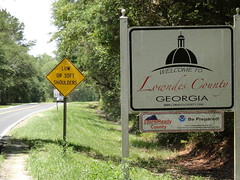There are no earthquakes in Georgia, right?
Well, Charleston is close enough for the Savannah River.
According to Southern Company,
which is building two new reactors at Plant Vogtle:
 Among the largest known regional earthquakes was an 1886 earthquake that
struck Charleston, S.C., about 85 miles from the Plant Vogtle site….
Among the largest known regional earthquakes was an 1886 earthquake that
struck Charleston, S.C., about 85 miles from the Plant Vogtle site….
1886 was more than 100 years ago! Probably a 500 year event. Oh, wait,
we had a 700 year flood here a few years ago. And those earthquakes in
Colorado and Virginia were 100 year events….
Well, if it was near Charleston it must have been minor, less than
that 6.8 quake in Virginia just now (within a few dozen miles of a nuke).
Except
USGS says
the Charleston quake was 7.3 magnitude:
This is the most damaging earthquake to occur in the Southeast United
States and one of the largest historic shocks in Eastern North America. It
damaged or destroyed many buildings in the old city of Charleston and
killed 60 people. Hardly a structure there was undamaged, and only
a few escaped serious damage. Property damage was estimated at $5-$6
million. Structural damage was reported several hundred kilometers from
Charleston (including central Alabama, central Ohio, eastern Kentucky,
southern Virginia, and western West Virginia), and long-period effects
were observed at distances exceeding 1,000 kilometers.
So let’s see, 86 miles is 137 kilometers.
 The most recent San Francisco earthquake, the Little Big One of 1989,
was a 7.1.
That’s the one that turned the 880 freeway into the 440
by collapsing the upper deck and closing the Bay Bridge.
The most recent San Francisco earthquake, the Little Big One of 1989,
was a 7.1.
That’s the one that turned the 880 freeway into the 440
by collapsing the upper deck and closing the Bay Bridge.
Well, at least they’re not building a solar power plant on the Savannah River.
If those things break in a quake you get… sunshine.
-jsq











